Do you know what's a crucial, yet often forgotten factor in the change equation?
Recently more than 120 leaders from many places in the USA, Canada, and the world shared with me their perception of what are the 3 main challenges with change. There were several interesting results results and I will share more. Yet, today I want to focus on what came at the top of the list. A crucial but often forgotten challenge: the human factor.
Many leaders of change still operate with an outdated flawed equation for change: good design + strategy + process + constant change + demanding leadership = successful change. What came up loud and clear in the research is that many change efforts fail because people and their emotions are not factored into the equation.
Fifty three of the 120 people that responded, that is 44% of the participants, mentioned some variation of people issues as one of the main three challenges about change.
Three main themes emerged as related to the challenge of people and their emotions:
1. People are not robots. They are human beings.
Here are some of the specific comments I received:
“The challenge of appealing to the HEARTS and minds of those who are being asked to change.”
“Many times the focus remains on the delivery and systems, and no thought or support is given to the individuals who will actually have to implement the change.”
“Businesses are in fact collections of people working together. We have to drive change with that in mind.”
“We tend to fail to see the systemic, personal, adaptive and conflictive side of change.”
“We forget the learning curve that individual employees have.”
“People tend to dislike change and complain about it.”
“Although people can see change as desirable, many times they are too tired, too busy, or too lazy to keep up with establishing the new habit.”
“Changing the structure or processes is the easy stuff. Transforming the people is the hard stuff!”
“Forgetting that change means changing something inside of you and everybody else. It requires thinking differently.”
As you can see from this sampler of comments, if change efforts are to be successful, you need to keep in mind relationships, resilience, motivations, understanding, patterns of thought and behavior, communication styles, and the synergy that a group of people create. No wonder about 80% of change efforts fail!
To be a successful leader of change you need to be able to connect with people’s minds and hearts.
2. People are different.
The fact that people are different presents the following challenges:
- people move at different speeds with change;
- they have different personalities that react differently to change;
- they come from different generations that look at change differently;
- different cultures think differently about change.
Differences are not bad. In fact, they can be an advantage. But differences also mean that change has to be presented and applied in different ways for different people.
3. People have emotions.
You need to remember that no matter how nice your charts, tables, and plans look, and how sensible they seem, people with real emotions and fears are the ones that need to make the changes happen. Emotions are never as tidy and nice as charts and tables. They are messy!
One of the surprises for me was to see how often leaders mentioned been challenged by people who were "overwhelmed" or who were feeling "change weary" because of so much change happening in an ongoing basis.
They talk about “change fatigue,” “exhaustion,” “change saturation,” “change burnout,” “change weary.” While in the past Kotter talked about the need to awaken a “sense of urgency,” what I hear today is a perceived reality that when change is constant, and all change seems urgent, people feel exhausted and can’t seem to find energy to move forward.
Some other emotions that were more often mentioned were:
- fear
- uncertainty
- stress
- insecurity
- confusion
- grief (having to let go of the past, or saying good by to coworkers)
- worry
As you can see, not even one positive emotion regarding change was listed. I think leaders of change need to give thought to how change can be perceived with more positive emotions, like joy, positive anticipation, an opportunity to use more creativity, and similar things.
Remember. . .
Change happens in the context of people. Without people, there can’t be change. Instead of seeing this as a disadvantage, find the way to the thoughts and hearts of your people by creating positive relationships and inviting more dialogue.
Free Offer!
If you want to learn more about what hinders and helps people with change, ask for my free White Paper: The Human Factor in the Change Equation: An often forgotten challenge

